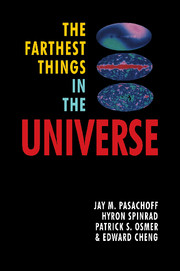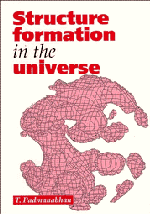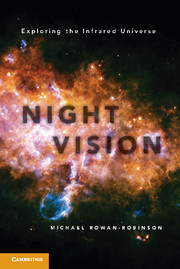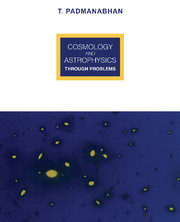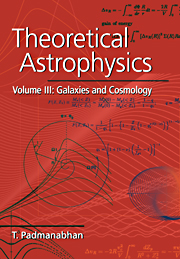After the First Three Minutes
The evolution of our Universe and the formation of stars and galaxies are mysteries that have long puzzled scientists. Recent years have brought new scientific understanding of these profound and fundamental issues. In lively prose, Professor Padmanabhan paints a picture of contemporary cosmology for the general reader. Unlike other popular books on cosmology, After the First Three Minutes does not gloss over details, or shy away from explaining the underlying concepts. Instead, with a lucid and informal style, the author introduces all the relevant background and then carefully pieces together an engaging story of the evolution of our Universe. Padmanabhan leaves the reader with a state-of-the-art picture of scientists' current understanding in cosmology and a keen taste of the excitement of this fast-moving science. Throughout, no mathematics is used and all technical jargon is clearly introduced and reinforced in a handy glossary at the end of the book. For general readers who want to come to grips with what we really do and don't know about our Universe, this book provides an exciting and uncompromising read.
Thanu Padmanabhan is a Professor at Inter-University Centre for Astronomy and Astrophysics in Pune, India. He is the recipient of numerous awards and author of three books, Structure Formation in the Universe (Cambridge, 1994), Cosmology and Astrophysics Through Problems (Cambridge, 1996), and, together with J.V. Narlikar, Gravity, Gauge Theories and Quantum Cosmology. He is also the author of more than one hundred popular science articles, a comic strip serial and several regular columns on astronomy, recreational mathematics, and the history of science.
- Up-to-date: cosmology changed completely in 1994 with results from the COBE satellite on the Cosmic Microwave Background; this is the first popular book to present our radical new understanding
- Uses no maths, and includes a glossary of scientific terms
- Written at the level of New Scientist and Scientific American 'thinking reader' in a clear, informal style
- Develops a clear, detailed, state-of-the-art picture of cosmology, without glossing over details, or shying away from the underlying concepts
Reviews & endorsements
"The serious reader will finish the book with an excellent understanding of current research in cosmology...Particularly lucid are the discussions of matter and light, the physics of stars and black holes, and the origin of light elements in the big bang." Choice
"A renowned cosmologist who has contributed much to the technical literature of his field, Thanu Padmanabhan offers an enjoyable account of our current understanding of galaxy formation and evolution, as well as a comprehensive tour of the necessary physics in After the First Three Minutes." New Scientist
"^After the First Three Minutes^ by cosmologist Thanu Padmanabhan is a lucid, nonmathematical overview of cosmology, particularly the origin and evolution of structure in the universe...whoever puts in the effort will be well rewarded by the comprehensive picture of the universe, both what we know and where important gaps in our understanding lie...For anyone interested in the difference between hot and cold dark matter and wanting to put the current pronouncements of cosmological revolution into scientific perspective, ^After the First Three Minutes^ is an excellent place to start." Meteoritics & Planetary Science
"Thanu Padmanabhan's book provides a wonderful service to the scientific community...[it] makes accessible a previously inaccessible field to both scientists and non-scientists." Yale Scientific Magazine
Product details
April 2011Adobe eBook Reader
9780511824487
0 pages
0kg
27 b/w illus. 5 tables
This ISBN is for an eBook version which is distributed on our behalf by a third party.
Table of Contents
- Preface
- 1. Introducing the universe
- 2. Matter, radiation and forces
- 3. Observing the universe
- 4. Getting to know the universe
- 5. Expanding universe
- 6. Forming galaxies
- 7. Universe at high redshift
- 8. Open questions
- Glossary
- Further reading
- Index.


